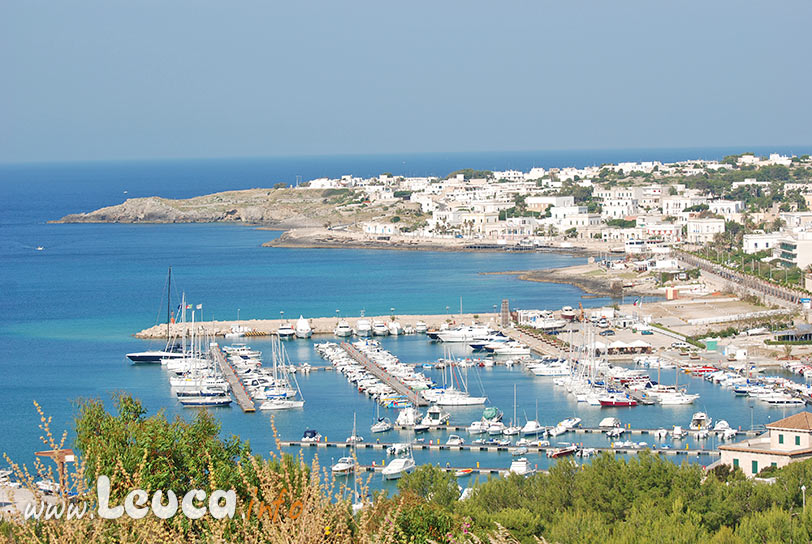Sommario
- 1 Santa Maria di Leuca Apulia… Gate of Heaven of Holidays
- 2 Why Santa Maria di Leuca is a perfect destination to a beautiful holiday ?
- 3 The name of Santa Maria di Leuca
- 4 Why it called Leuca?
- 5 Why “Santa Maria” di Leuca?
- 6 Santa Maria di Leuca, the place where the Ionian Sea meets the Adriatic Sea.
- 7 History of Santa Maria di Leuca, between myth, mermaids and legends
- 8 The Little Leuca, on the road of the ancient pilgrimage to Santa Maria di Leuca’s Sanctuary.
- 9 The port of Santa Maria di Leuca
- 10 THE LIGHTHOUSE OFSANTA MARIA DI LEUCA
- 11 Photographs Santa Maria di Leuca
Santa Maria di Leuca Apulia… Gate of Heaven of Holidays
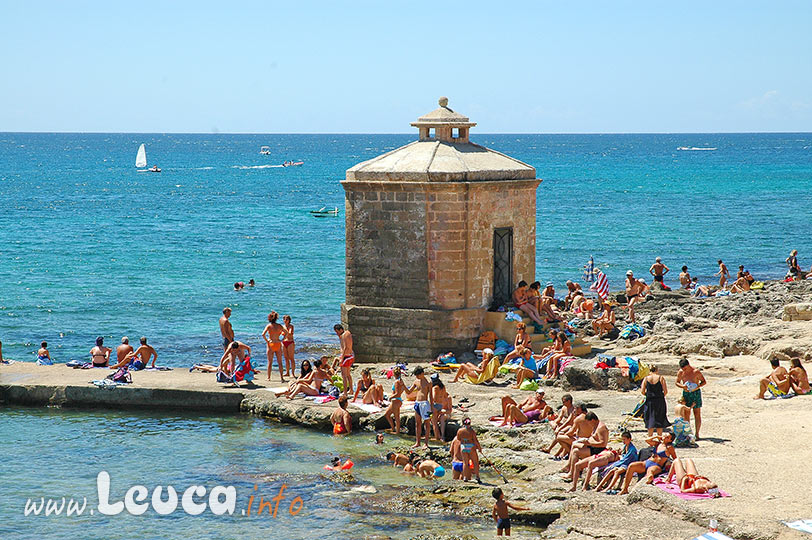
Beautiful and Light, Leuca has always fascinated people for its light and its position in the inlet between “Punta Meliso” and “Punta Ristola”.
The Greek sailors, attracted by the beauty of Santa Maria di Leuca, gave it the name Leukos, lit by the Sun.
According to the legend the siren Leucasia found peace on its reef. Also St. Pietro disembarked in Leuca during his journey to Rome. He christianized the existing pagan temple devoted to the Goddess Minerva and he devoted it to the Virgin Mary.
Leuca so became Santa Maria di Leuca and for the Christians it is the door to Heaven. De Finibus Terrae for the Romans, border beyond which there is only the infinity of the horizon.
Santa Maria di Leuca during its millenary history has preserved and enriched its charm and its mystery.
Why Santa Maria di Leuca is a perfect destination to a beautiful holiday ?
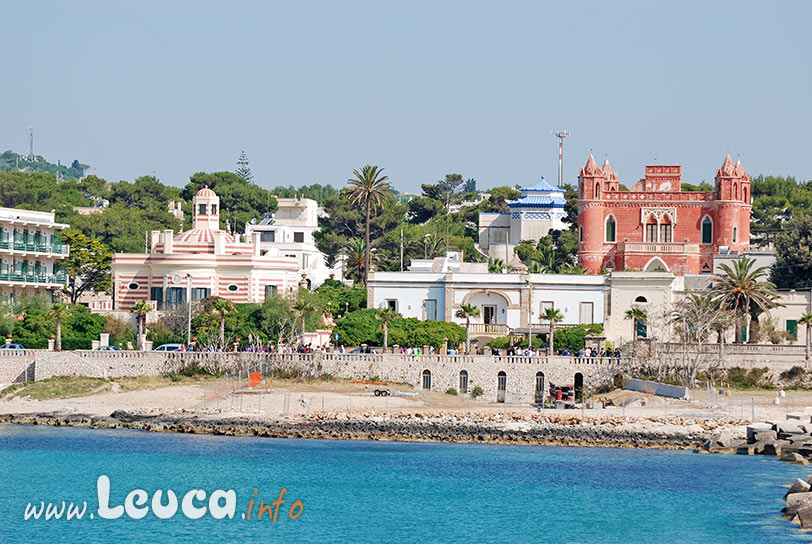
There are many things make Santa Maria di Leuca a beautiful holiday destination.
- The Port of Leuca is landing stage of big fishing boats and holiday yachtsmen. It’s so pittoresque! And you will explore the Caves of Leuca (Grotte di Leuca) renting a boat too!
- In S.Maria di Leuca there is the beautiful lighthouse overlooks Punta Meliso.
- it is possible to climb the 250 steps of the monumental staircase which leads to the Sanctuary and you can watch the waterfall show (cascata Monumentale di Leuca)
- The intense blue of the sea, its many coloured seabed, its bays of sand and its beautiful beaches (spiagge di S.M. di Leuca)
- visit the historical beauties: The bathtubs on the beach (Bagnarole), the sixteenth-century tower of the “Omo Morto”, the beautiful nineteenth-century villas of Leuca with their parks and gardens.
- in Santa Maria di Leuca you can spend your holidays in one of the splendid Sea view villas. You can rent an holiday home, an hotel or a typical local trullo.
- the most popular festival in honor of the Madonna and show with fireworks.
- in Santa Maria di Leuca you can stroll along the wonderful seafront.
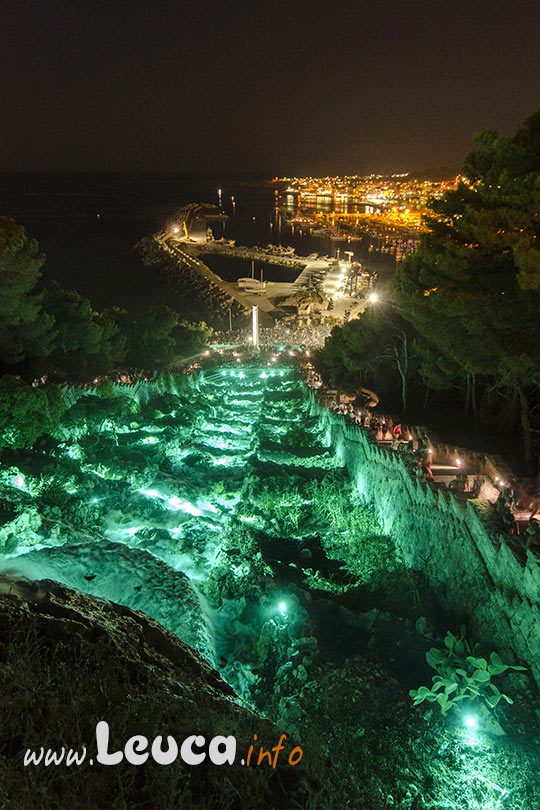
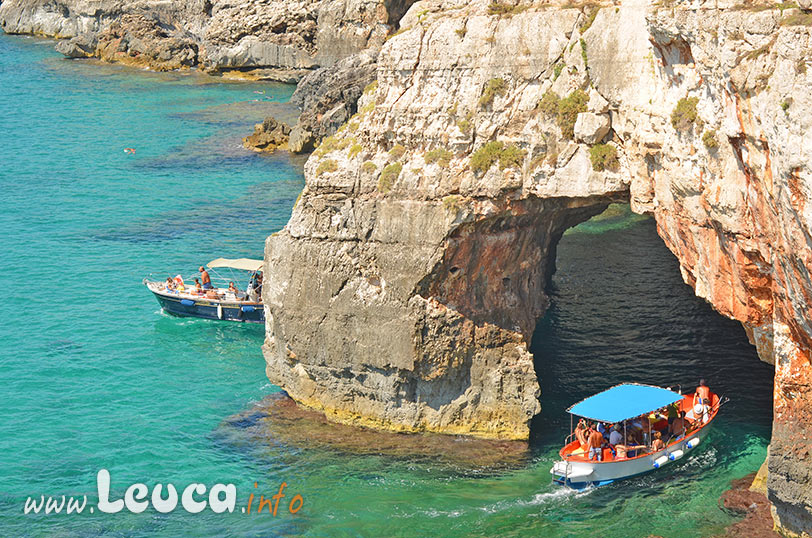
Grotta delle Tre Porte a Santa Maria di Leuca 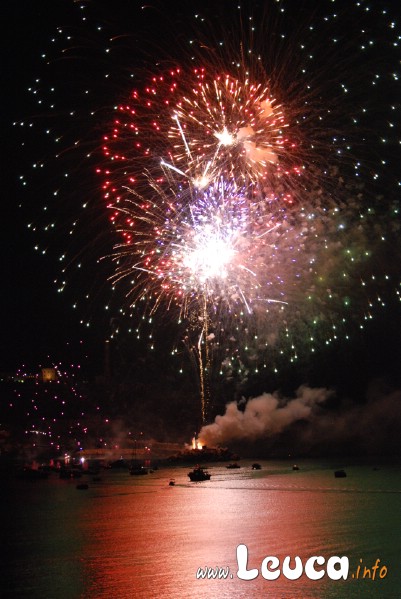
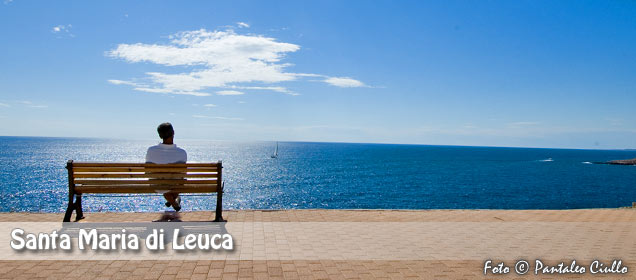
Scultura su punta ristola con vista sulle grotte di denominate tre porte nella Marina di Leuca – Foto Ciullo Pantaleo 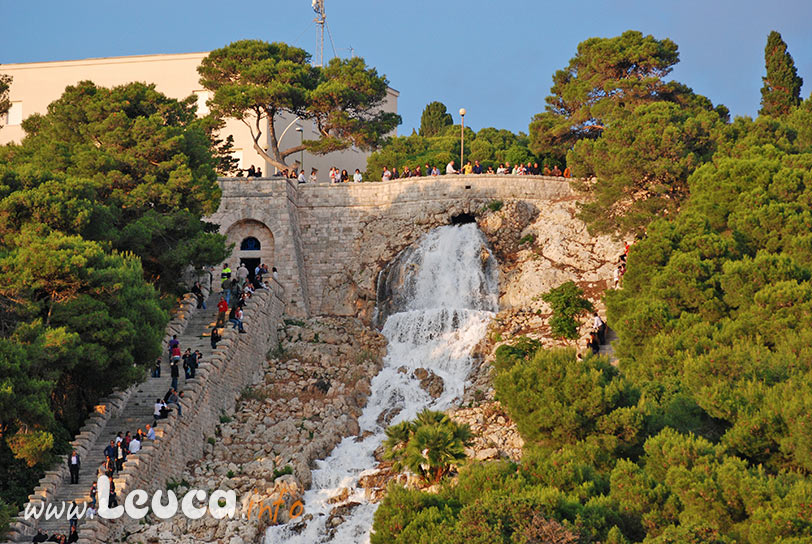
Foto Particolare della cascata Monumentale di SantaMaria di Leuca in Salento – Foto Ciullo Pantaleo 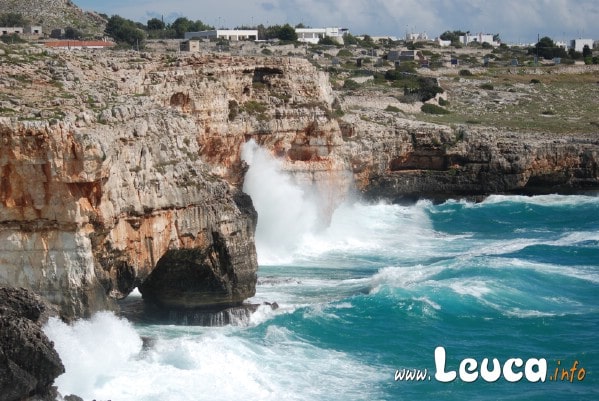
Il Mare si infrange sulle Grotte nella Marina di Leuca. – Foto Ciullo Pantaleo 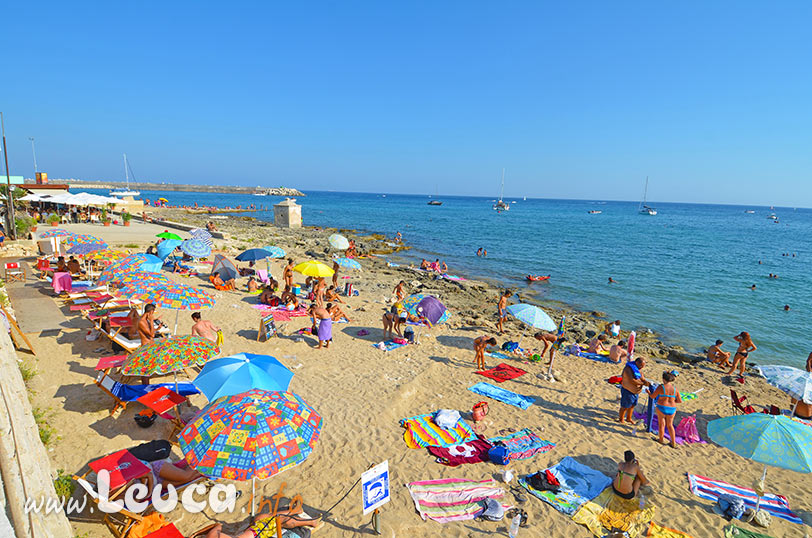
a spiaggia di sabbia a Marina di Leuca 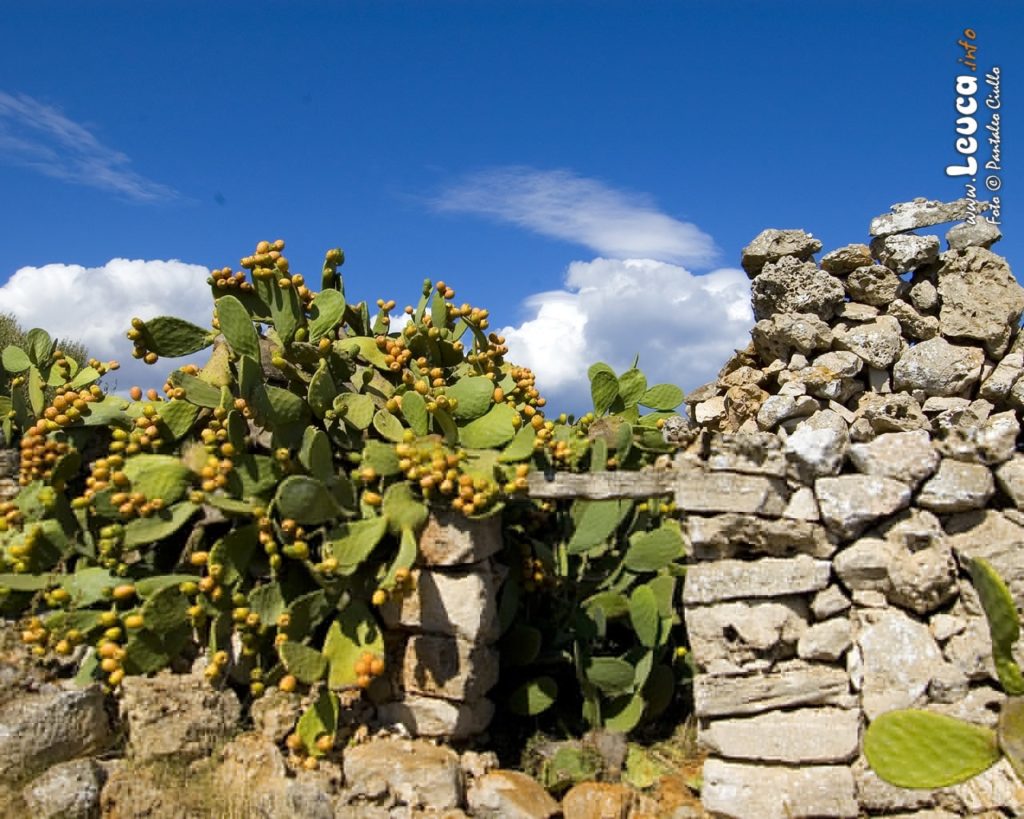
Tra Muri a secco e Ficarigne – Foto Ciullo Pantaleo 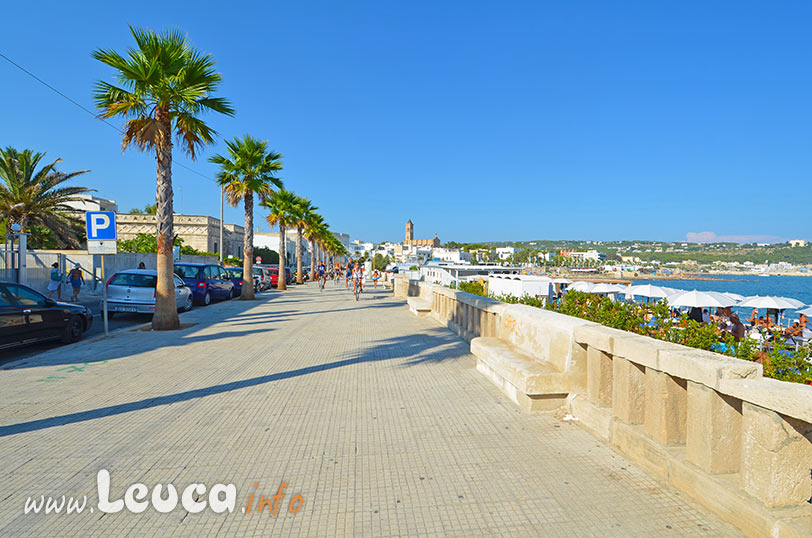
Lungomare Cristoforo Colombo a Leuca 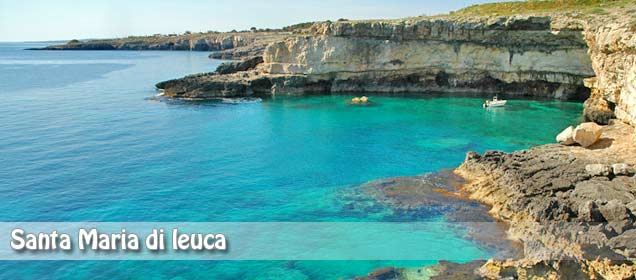
Lungomare Santamaria Leuca, il magnifico Lungomare della Marina di Leuca dopo la piantumazione delle palme – Foto Ciullo Pantaleo
The name of Santa Maria di Leuca
S. Maria di Leuca had different names.
Erodoto called it “Iapigio Promontory” because it was situated on the” Capo Iapigio “. Varrone “Uria” in relation to its origins. Ovid called it “Sibari” because it was the first port that you can meet coming from Greece.
Horatio and Strabone called it “Leuca”, leukos, because, according to the Homeric geography, it was situated to the west of Greece and it was illuminated by the sun.
Why it called Leuca?
Leuca derives from the Greek Leukòs that means white, a very frequent toponym in Orient since the island of S. Maura in the Ionian sea was called once Leucade.
The reason of this adjective is uncertain. Maybe it was about the colour of houses or the effect of the sun which illuminated these lands early in the morning. Especially for all those that coming from the East had the sun behind their shoulders, or the foam of the sea that created this whiteness.
Why “Santa Maria” di Leuca?
The name Santa Maria di Leuca has a Christian origin. The legend tells that in the same place where today is situated the Sanctuary a time there was a temple dedicated to the goddess Minerva. This temple was christianized by S. Peter. The apostle was disembarked at this point of the italic penisula, departed from the East and bound for Rome to preach the word of God.
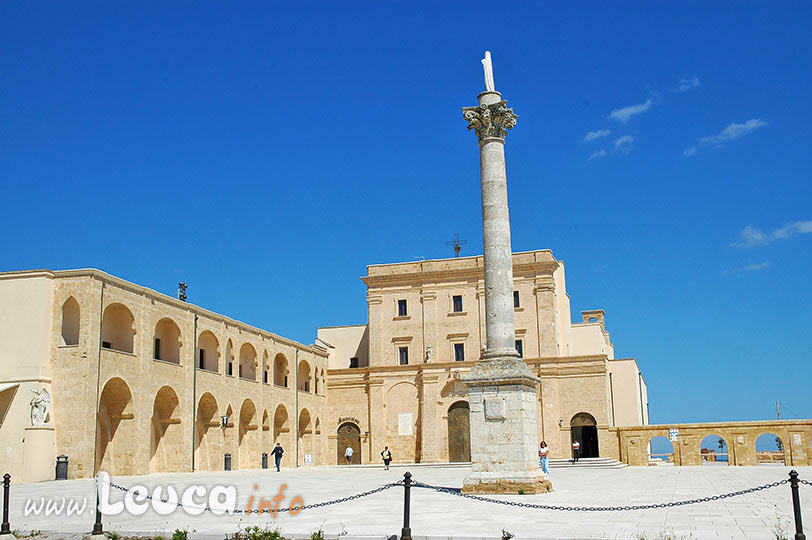
A funerary stone of 43 A.D. at the entrance of the Sanctuary testifies this event and the passage from Paganism to Christianity. Then a series of popular traditions of affirms that coming from Gagliano del Capo to the bifurcation for Leuca, close to a farm there is an ancient votive pillar. Here is the custom to deposit a stone to remember the visit to the Sanctuary.
According to the tradition S. Peter took a rest in this precise place before resuming his journey. Another legend handed down through many generations affirms that near Giuliano there is a well where the apostle would be stopped to drink
Santa Maria di Leuca, the place where the Ionian Sea meets the Adriatic Sea.
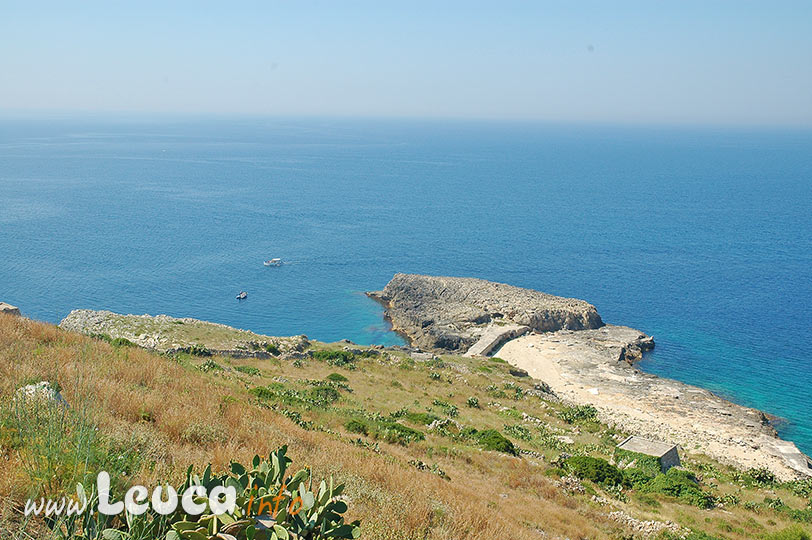
S. Maria di Leuca rises on the Japigio promontory on the extreme tip of the spur of Italy which ends on the high rocks of “Punta Meliso “, precisely where the Ionian sea and the Adriatic sea meet. The spectator to enjoy an extremely rare spectacle: to watch the sunrise in the waters of the Adriatic sea and the sunset in the Ionian sea. In this point the continuous currents seem to plough the sea so much so that it is possible to see a diversity of colours in the water. For local people they are two seas that meet. It is a romantic suggestion!
History of Santa Maria di Leuca, between myth, mermaids and legends
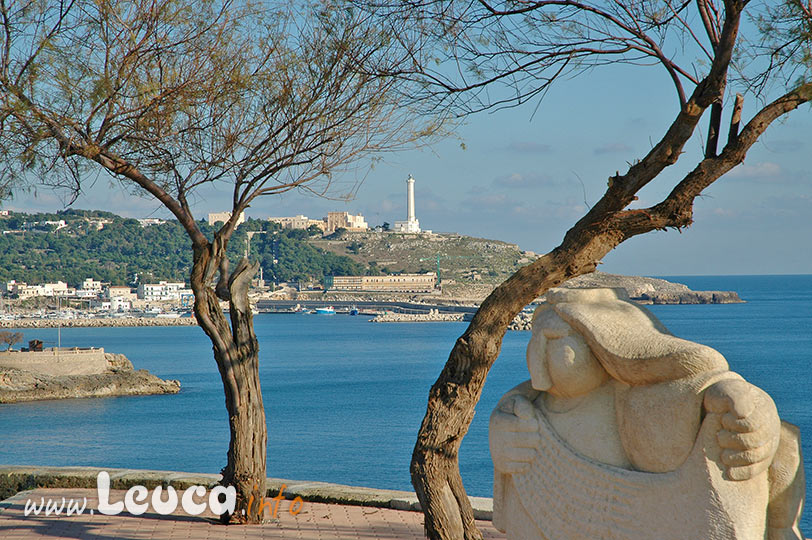
Its historical origins are enveloped in numerous legends that attributed to it the picture of a marvellous and imaginative place. A legend tells indeed that the salentine peninsula hangs from the east because a Greek god wanted it all for himself. Besides a fresco of the ‘600, situated on the vault of the Sacristy of the church of S. Giovanni Battista in Parabita, seems to tell as the salentine shores were once: Gallipoli, Castro, S. Isidoro and naturally Leuca of which we immediately recognize the promontory with the Sanctuary surrounded by many buildings.
The most surprising picture is the representation of a crowned siren with 2 tails that with closed eyes (probably dead) floats on the water. The Capuchin monk Tasselli, author of “Antichità di Leuca 1963” (“Antiquity of Leuca 1963”) wrote: “… Some say that this city of Leuca was built by the Siren Leucasia like Naples by the Partenope companion. But these sirens, and these fables, are never admitted by the historians as reason of edification of cities or nations…”. Tasselli agrees with the historians.
Licofronte in the poem Alessandra (vv. 716-737) tells that after been defeated by Ulysses the three sirens, Partenope, Leucasia and Ligea, had the unhappy destiny to finish their life in the deep waters of the Tyrrhenian Sea changing their nature before giving origin to three different cities. Partenope was buried near a river and the city of Naples was born from its tomb; About the other two the historians have given different opinions.
Recently a salentine writer, Carlo Stasi, in his work, Leucasia, has given a theory about the famous names Meliso and Ristola beginning from the story of the death of the siren Leucasia.
History of Leuca, historical sources
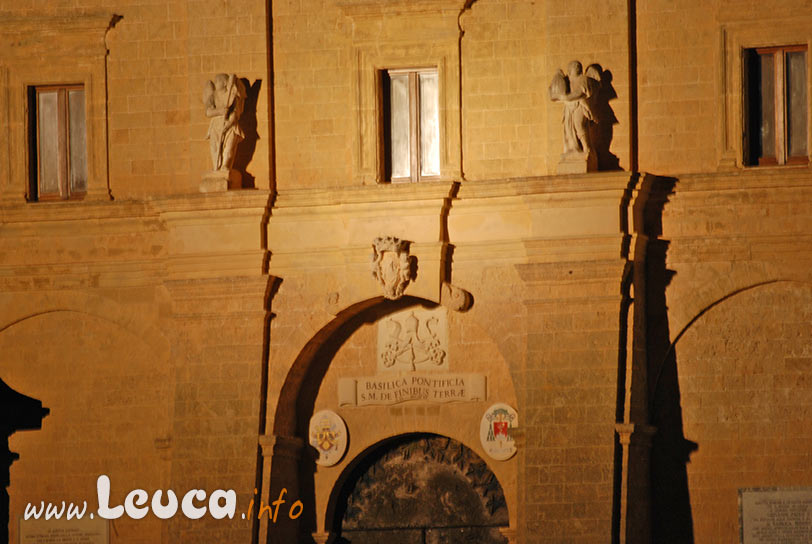
According to some archaeologists Leuca would have different epochs and founders, for some it was founded indeed by the Acarenis (a Greek people), for others by the Philistines and for others again by the Phoenicians.
Recently some researches carried out in the coast and in the hinterland of Leuca attested to the primitive man’s existence of the Neanderthal period, in the caves of this coast. Besides some researches carried out by the institute of Archaeology of the University of Lecce brought to light the existence of a village that dates back to the Bronze Age situated in the area of the present Sanctuary (Santuario di Santa Maria de Finibus Terrae)
The ancient origins of Leuca are confirmed by the innumerable quotes of the classical writers from Tucidide to Galateo that remembers it like a little city in which a temple dedicated to the goodness Minerva rose, to Virgil that in the Aeneid’s third book (v. 533-536) described the Japigio promontory with hills of punta Meliso and Ristola:
”The land lies open to the raging east, Then, bending like a bow, with rocks compress’d, Shuts out the storms; the winds and waves complain and vent their malice on the cliffs in vain, The port lies hid within; on either side Two tow’ring rocks the narrow mouth divide. The temple, which aloft we viewed before to distance flies, and seems to shun the shore.”
There are no doubts that Virgil speaks about the “Capo di Leuca “, because following the way made by Aeneas, who came from the Epirus (a region situated to the Northwest of Greece) you arrive effectively in this extreme strip of Italy. It is also confirmed by the fact, that, after having left Leuca with his soldiers, after having passed Punta Ristola, he met the Gulf of Taranto.
The Little Leuca, on the road of the ancient pilgrimage to Santa Maria di Leuca’s Sanctuary.
It is precisely to help devotees who walked for days to visit the Blessed Virgin Mary, that don Annibale Francesco Capece , baron of Barbarano between 1685 and 1709, made built in the suburb of the small city, on the ancient road which led from Lecce to the Sanctuary of Santa Maria di Leuca, the complex with the small chapel of S. Maria di Leuca del Belvedere, known as Leuca Piccola.
This building was a polyfunctional complex because it was provided not only with religious and cult rooms but also with rest and refreshment rooms for pilgrims and animals, allowing devotees to resume the pilgrimage the following day. Indeed at the entrance of undergrounds a slab of stone says like this :
“Don Annibale Capece or mi feconda, Se un tempo sviscerar fece il mio seno; entra qui, dunque,e ti trattenga almeno l’ombra, il fresco, la mensa, il vino e l’onda.”
A curiosity that tourists should know, “THE 10 P”. Indeed, a time on the front of the inn there was a slab of stone with the 10 P engraved.
Parole Poco Pensate Portano Pena Perciò Prima Pensare Poi Parlare “Words little reflected upon bring pain, therefore, first think, then speak.”
The port of Santa Maria di Leuca
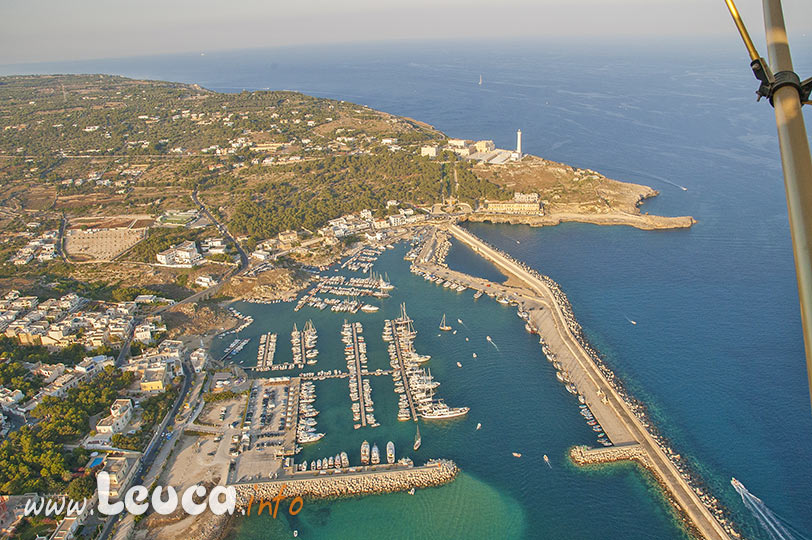
Between “Punta Meliso” and “Punta Ristola”, to the southwest of the lighthouse, extends the little port of S. Maria di Leuca constituted by an outer breakwater of high-water wharf with three arms and by a deepwater wharf situated to about 650 m of the outer breakwater.
Depths vary from 3 to 7 meters. It has been equipped with floating quays and a quay used for the fishing of 480 m with 150 berths illuminated by small lights. There are 253 places boat and 31 fishing boats.
The port zone offers a lot of services: a mobile bridge crane of 20 t, water intakes and electric energy, 5 wharfs, 3 machine shops, petrol and gasoline pumps, 2 systems for the ice production and rooms for fish preservation and a room to supply motor trawlers.
THE LIGHTHOUSE OF
SANTA MARIA DI LEUCA
To some meters of the spacious place of the Sanctuary, the tourist’s eyes cannot avoid the majesty and the size of the lighthouse of first class projected by the engineer Achille Rossi and built in 1864 instead an anti-corsair tower wanted by Philippe II on “Punta Meliso “.
The lighthouse of santa maria di leuca (faro di Santa Maria di Leuca) was activated for the first time on 6 September 1866. The lighthouse which is 47 m high from soil level and 102 m from sea level, offers the possibility, going up a spiral staircase of 254 steps, to reach the circular terrace. It often arrives that during limpid days we can see Corfu and the Acrocerauni Mountains.
Lamp, with its diameter of 3m, which rests on an octagonal tower and on a building of 2 floors, is provided with 16 lenses, 6 free and 10 dark, which send out white and red light beams of 50 km which mark the dangerous shoal of the sea of Ugento.
Since 1940 the radio beacon also provided an international service by radiating a signal every 4 hours with a clear atmosphere and every 4 minutes with the fog. Inside the building there are 4 rooms of which 3 are used by lighthouse keepers and one is used as inspection, engine and radio beacon room. There are also 3 other buildings which have different functions.
In the end, there is a perceptive feature, not technical: the beautiful and rare view that you can appreciate from the terrace. From here the sea, warmed by the rays of the sun, becomes multi-coloured and, this beautiful and endless view allows the spectator, only with the mind, to travel in the infinite space.
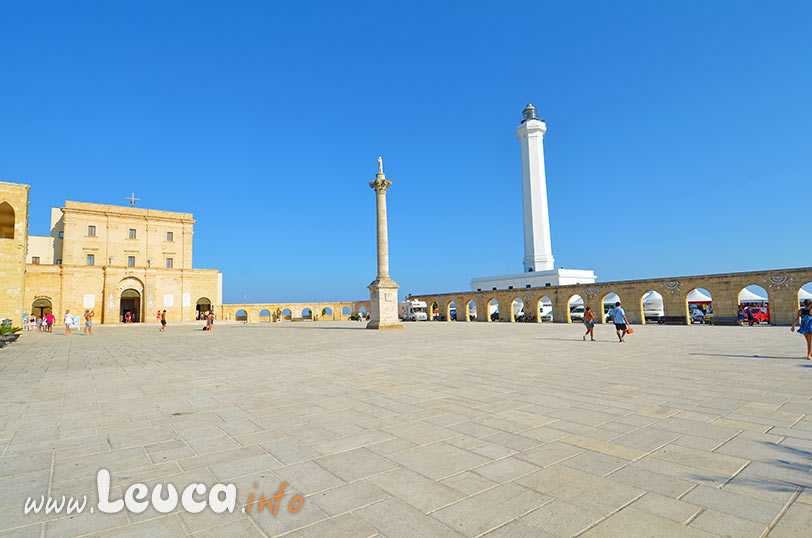
Photographs Santa Maria di Leuca
Very soon a gallery devoted to different sections and hundreds of photos.
